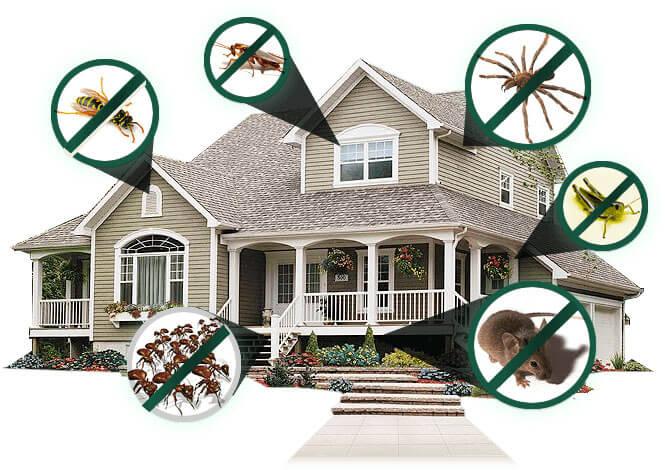Bed Bug Therapy Break Down: Comparing Chemical Vs. Non-Chemical Solutions
In the realm of pest control, particularly when managing the persistent concern of bed pests, the choice in between chemical and non-chemical treatment solutions can be a crucial one. Both strategies provide unique benefits and disadvantages, influencing elements such as efficiency, safety and security factors to consider, and total cost. By taking a look at the nuanced information of each approach, a clearer understanding of which path to go after in attending to a bed insect infestation can be achieved.
Efficiency of Chemical Therapies
Chemical therapies for bed insect infestations have actually been widely acknowledged for their powerful and quick effectiveness in eradicating these insects. When taking into consideration the performance of chemical treatments, it is vital to understand that they can offer a quick and comprehensive service to a bed bug trouble. Expert pest control experts frequently rely upon pesticides to target bed pests at numerous stages of their life process, including fairies, eggs, and grownups. These chemicals normally work by interrupting the bed pests' nerve system, leading to paralysis and ultimate death.
Furthermore, chemical treatments have the advantage of using residual effects, meaning that they can remain to remove bed insects even after the first application. This recurring activity is especially valuable in combating any possible re-infestations. Furthermore, the fast action of chemical therapies can bring alleviation to people dealing with serious bed bug invasions, allowing them to reclaim control of their space swiftly.
Safety And Security Interest In Chemical Solutions
One important element that needs mindful consideration when making use of chemical remedies for bed insect therapy is making sure the safety of residents and the environment. Exposure to particular chemicals used in bed pest treatments can lead to respiratory issues, skin inflammation, or various other negative responses, especially in people with pre-existing problems or level of sensitivities.
Furthermore, the ecological effect of chemical remedies is another considerable consideration. Some pesticides used in bed pest therapies may be hazardous to valuable pests, wildlife, and environments if they seep into the soil or water supply. It is necessary to use chemical therapies carefully, adhering to safety guidelines, and considering less poisonous alternatives to minimize these threats and guarantee the secure and reliable management of bed pest invasions.
Benefits of Non-Chemical Strategies
Taking into consideration the possible safety and security problems and ecological effect associated with chemical options for bed pest treatment, discovering non-chemical approaches presents an appealing option with several unique advantages. Non-chemical techniques offer a safer option for families, especially those with youngsters, people, or pets sensitive to severe chemicals. These techniques eliminate the dangers of direct exposure to hazardous compounds, minimizing the capacity for damaging wellness results. In addition, non-chemical therapies are eco-friendly, as they do not add to air or water air pollution, making them a lasting option for pest control.
Furthermore, non-chemical options can be effective in targeting bed bugs, including hard-to-reach areas where chemical therapies might not permeate - A1 pest control services charlotte. Methods such as warm therapy, vacuuming, steam cleansing, and bed mattress coverings give comprehensive eradication without the use of unsafe chemicals.
Limitations of Non-Chemical Treatments

Additionally, non-chemical therapies commonly call for multiple applications to accomplish effective removal. This can be taxing and may not constantly assure complete elimination of all bed bugs and their eggs, especially in hard-to-reach or concealed locations.
Additionally, the success of non-chemical treatments heavily relies on appropriate implementation and thoroughness, which can be challenging for people without expert experience. Inadequate application of non-chemical methods may result in incomplete elimination, bring about persistent infestations and the requirement for added therapies.
Consequently, while non-chemical treatments have their advantages, it is important to recognize these constraints and consider them when establishing the most reliable approach for handling bed insect invasions.
Cost Contrast: Chemical Vs. Non-Chemical Options
Given the limitations associated with non-chemical treatments, a necessary facet to assess in the context of bed pest management is the cost contrast between chemical and non-chemical alternatives. Chemical therapies typically entail the application of pesticides by experts, which can vary from why not check here $250 to $900 per area, depending upon the intensity of the invasion and the dimension of the area to be treated. On the other hand, non-chemical treatments like warmth treatment or heavy steam can be more pricey, with expenses varying from $1,000 to $6,000 for a whole home. While the preliminary cost of chemical treatments might appear reduced, multiple therapies might be needed to completely eradicate the infestation, possibly enhancing the overall price. On the various other hand, non-chemical options might supply a much more lasting and green service, although they can be cost-prohibitive for some people. Eventually, when taking into consideration the price of bed bug therapy choices, it is important to evaluate the upfront expenditures against the performance and long-lasting sustainability of the chosen technique.
Final Thought

Taking into consideration the possible safety worries and ecological effect read here connected with chemical solutions for bed pest therapy, discovering non-chemical strategies provides an encouraging alternative with a number of distinctive benefits.Provided the constraints linked with non-chemical treatments, a vital facet to evaluate in the context of bed insect monitoring is the price contrast between chemical and non-chemical choices. In contrast, non-chemical therapies like warmth therapy or steam can be much more costly, with expenses varying from $1,000 to $6,000 for a whole home. While the first price of chemical treatments may seem lower, multiple treatments may be required to fully remove the problem, possibly boosting the total expense.In conclusion, when contrasting chemical and non-chemical bed insect therapy alternatives, it is necessary to think pop over to these guys about efficiency, security, benefits, restrictions, and price.